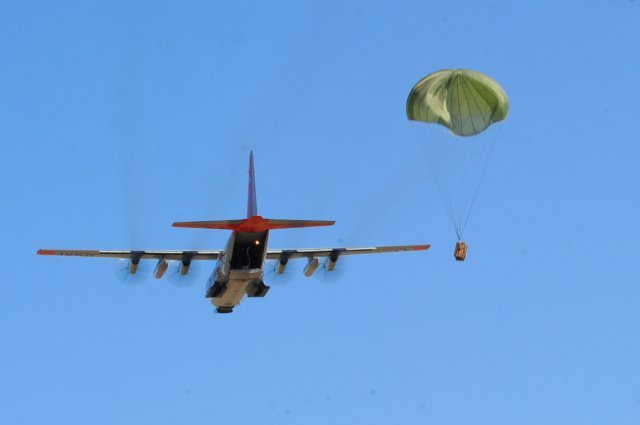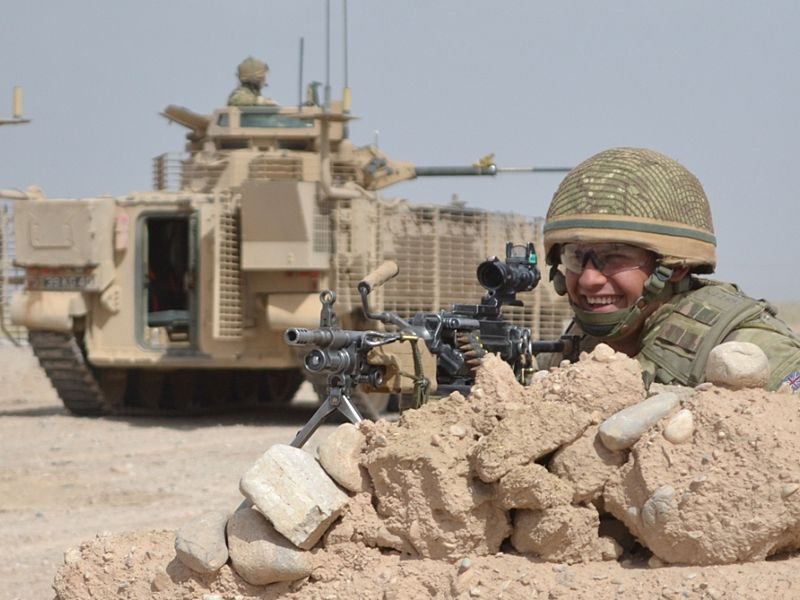Air drops provide the means to distribute vital equipment and supplies to Soldiers in isolated locations with rough terrain, inadequate delivery routes and enemy activities. The use of air drops, as opposed to resupplying by way of ground transportation, can reduce the risk of roadside bombs and add to the Army’s flexibility on the battlefield.
The 10th Brigade Support Battalion organized a joint training exercise Thursday to certify 39 1st Brigade Combat Team Soldiers attending the Drop Zone Safety Team Leader Course. Soldiers spent the day at a drop zone, where they learned to safely coordinate and receive air drops on the battlefield.
“Airborne operations and helicopter operations are still the fastest and most effective way to get Soldiers and equipment on the ground,” said Staff Sgt. Richard Johnson, Pathfinder School instructor from Fort Benning, Ga.
Johnson added that they have to make sure they have leaders who can establish pickup zones in order to successfully make air drops.
Two C-130 Hercules airplanes from the 109th Airlift Wing, New York Air National Guard out of Stratton Air Base, Schenectady, dropped multiple training pallets, consisting of mostly water barrels and cinder blocks, some of the drops landing within meters of their targets.
“It’s important to do this kind of training because it’s what’s actually going on. A lot of places in Afghanistan, you can’t drive to them, so we refuel them by air drops,” said Maj. Daniel Corindia, air mobility liaison officer.
The air drops simulate the same type of drops being piloted in current operations in Afghanistan today. The training will equip the “Warrior Brigade” Soldiers with the knowledge to conduct these operations themselves.
“You want to practice like you play,” Corindia said. “In Afghanistan, (with) some of the drop zones, if you’re off by 75 to 100 yards, these supplies go to our enemy as opposed to the troops that need them.”
Spc. Deshawn E. Pitts, 1st Brigade Special Troops Battalion, mentioned that his unit didn’t have drop zone safety certified personnel and in the past had to rely on the expertise of other units, Army and Air Force, to assist them in receiving air drops.
Pitts added how important it was to use these techniques because it kept Soldiers off the road, decreasing the chance of those Soldiers getting hit by an improvised explosive device.
“Predictability kills,” Johnson said. “Travel down a road, and you’re very predictable. You’re only going one of two directions. That makes it very easy for our enemy to place IEDs (improvised explosive devices) or (set up) ambushes that kill our Soldiers.”
Taking the road less traveled in the combat zone can result in receiving crucial assets, deterring the enemy’s observations of entry and exit routes and ultimately increasing the chance of Soldiers’ lives being saved.











